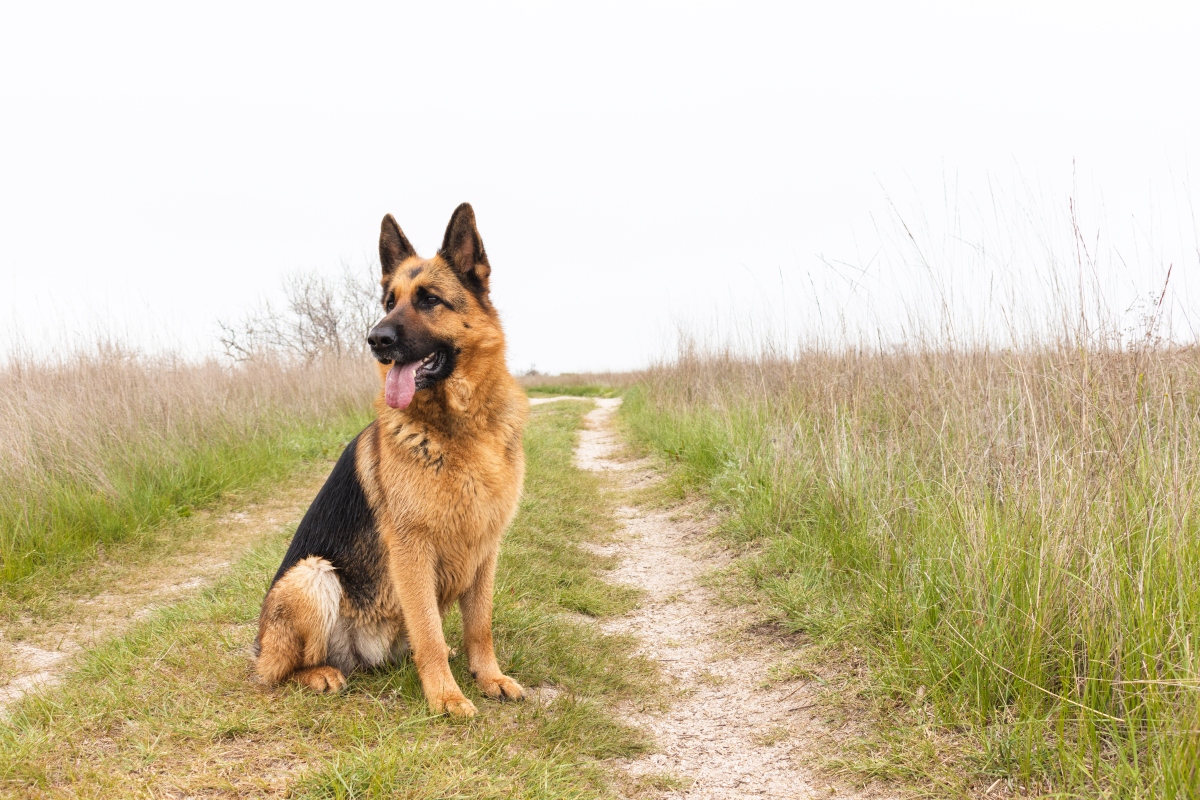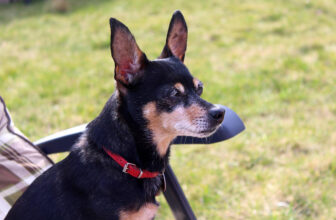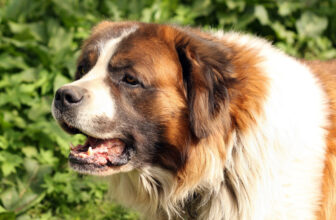
Check out our latest products
Shutterstock
Dogs aren’t just pets, they’re cherished family members who count on us for their well-being. While all dogs deserve love and care, certain breeds are more prone to genetic disorders that need our attention. From joint pain and heart issues to eye conditions and spinal concerns, being informed makes a big difference. Understanding these risks means we can act early, schedule screenings, and provide the best possible support. With the right knowledge and consistent care, we help our furry companions live longer, more comfortable, and joy-filled lives.
Labrador Retriever

Shutterstock
Labradors are beloved for their friendly nature, but they face hip and elbow dysplasia risks. Those joint conditions can develop early and lead to pain or reduced mobility. Progressive retinal atrophy also affects this breed, threatening their vision as they age. Regular vet checks and healthy weight management can mitigate stress on joints. Screening tests help catch eye conditions early, preserving the quality of life.
German Shepherd

Shutterstock
German Shepherds have strong builds but are at risk for degenerative myelopathy, a spinal disease causing weakness in the hind legs. Hip dysplasia is also common, affecting mobility and comfort. Many also inherit exocrine pancreatic insufficiency, which impacts digestion and nutrient absorption. Keeping them slim and active reduces stress on joints and the spine. Early diagnosis of neurological signs helps vets manage progression more effectively.
Golden Retriever

Shutterstock
Golden Retrievers face a higher incidence of heart issues like subvalvular aortic stenosis, reducing blood flow to the body. They’re also prone to cancer, particularly hemangiosarcoma and lymphoma. Skin allergies and hypothyroidism appear regularly, impacting coat condition and energy. Regular exams and blood tests can flag early thyroid or allergy problems. Annual cardiac assessments help detect valve issues before symptoms worsen.
Cocker Spaniel

Shutterstock
Cocker Spaniels may be sweet-natured, but they carry higher risks for progressive retinal atrophy and glaucoma, both of which can lead to blindness. Ear infections are also common due to their long, floppy ears. Regular ear cleaning and annual eye exams are essential for maintaining their health. They can also be prone to hip dysplasia and autoimmune disorders. With a consistent grooming routine and early detection, Cocker Spaniels can continue to thrive despite their inherited sensitivities.
Boston Terrier

Shutterstock
Boston Terriers are prone to breathing issues because of their short snouts, especially in heat or during high activity. They also experience higher rates of cataracts and cherry eye, a visible tear gland condition. Their compact bodies can lead to patellar luxation and spinal problems. A balanced lifestyle, careful activity levels, and regular vet visits help ease strain. With attentive care, these feisty pups maintain their cheerful charm and health.
French Bulldog

Shutterstock
French Bulldogs are vulnerable to brachycephalic airway syndrome, short snouts that cause breathing struggles. Spinal issues like intervertebral disc disease are also common because of their compact bodies. Skin fold dermatitis emerges from their facial wrinkles without cleaning. Weight management and air cool-downs help ease respiratory strain. Gentle exercise and support enable spinal health and skin care.
Cavalier King Charles Spaniel

Shutterstock
This breed is at high risk for mitral valve disease, a heart condition causing blood leakage from the heart. Syringomyelia, a painful neurological issue, is also common in their skull shape. Regular cardiac monitoring and neurological exams can identify problems early. Medications and lifestyle adjustments help manage both disorders. Family support can preserve lifespan and quality of life despite genetic challenges.
Dachshund

Shutterstock
Long-bodied Dachshunds have frequent back problems like intervertebral disc disease. Their shape puts spinal discs at risk of injury under tension. Obesity worsens risks, so diet and posture are critical. Supporting their back with harnesses and avoiding jumping prevents exacerbation. Surgery and rehabilitation can be effective when a spinal injury occurs.
Boxer

Shutterstock
Boxers struggle with cardiomyopathy, a disease that weakens the heart muscle over time. They also face mast cell tumors as skin cancer and hip dysplasia. Regular cardiac ultrasounds and skin checks are vital for early treatment. Maintaining a lean body weight and moderate exercise supports joint and heart health. Early detection and care help Boxers enjoy higher-quality, longer lives.
Rottweiler

Shutterstock
Rottweilers are predisposed to osteosarcoma, an aggressive bone cancer, and hip dysplasia. Obesity increases joint stress in this large, heavy breed. Regular X-rays and weight checks are key to catching issues early. Balanced nutrition, low-impact exercise, and joint supplements support skeletal health. Addressing bone pain with vet guidance improves their comfort and mobility.
Bulldog

Shutterstock
Bulldogs face a host of genetic ailments: respiratory problems, hip dysplasia, heat intolerance, and skin infections due to folds, all because of breeding for short snouts and heavy bodies. Daily cleaning of skin folds and climate-controlled rest reduce risks. Gentle walks and cooling vests help ease breathing stress. Monitoring hip and skin health preserves their comfort throughout life.
Pug

Shutterstock
Pugs struggle with brachycephalic airway syndrome and eye disorders like corneal ulcers due to protruding eyes. Obesity worsens breathing difficulty and joint stress. Clean airways and moist eyes with veterinary care protect against injury. Small meals distributed throughout the day maintain a healthy weight. Caring for their airways and joints prolongs playful moments.
Doberman Pinscher

Shutterstock
Dobermans face dilated cardiomyopathy, a weakening heart that impacts blood flow, and von Willebrand’s disease, affecting blood clotting. Thyroid dysfunction and hip dysplasia also appear commonly. Yearly heart tests and blood typing help detect and manage these conditions. A balanced lifestyle, including moderate exercise and a healthy diet, helps control weight and joint stress.
Yorkie

Shutterstock
Yorkshire Terriers battle luxating patella, collapsing spine, and tracheal collapse from their tiny body structure. Regular orthopedic exams identify joint flexibility and spinal concerns. Harness use and low-impact exercise support joint health. Monitoring their breathing and collar use preserves throat health. With supportive care, Yorkies stay spirited companions.
Great Dane

Shutterstock
Great Danes face dilated cardiomyopathy and bloat, twisting of the stomach that can be life-threatening. Hip dysplasia and osteosarcoma also affect this giant breed. Elevated feeding, slow mealtimes, and regular heart monitoring reduce bloat and cardiomyopathy risks. Comfortable bedding helps joint health. Proactive screening guides interventions before a crisis.
The “Breed With Benefits…and Worries” Guide

Shutterstock
The qualities that make each dog breed so special can also come with genetic health risks that need attention. These loyal pups remind us that responsible pet parenting goes beyond daily care; it includes preventive screenings, managing weight, and being informed about breed-specific conditions. With early detection and the right support, many inherited issues can be managed or even delayed. Love isn’t just cuddles and playtime; it’s also staying vigilant about their health. By taking thoughtful steps today, we help ensure longer, happier lives for the dogs we treasure most.







![[5G & 2.4G] 2K Indoor Security Camera for Home Security, AI Voice Change for 2-Way Talk, Motion Detection, Night Vision, 24/7 SD Recording/Cloud Storage, WiFi Home Camera, Pet Cam with Phone App](https://i3.wp.com/m.media-amazon.com/images/I/61I2U+sTT3L._AC_SL1500_.jpg?w=300&resize=300,300&ssl=1)






